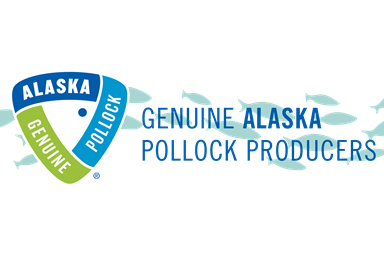Craig Morris , May 05, 2025
GAPP Partnership Solicitation

SEATTLE, Wash.—
The Association of Genuine Alaska Pollock Producers (GAPP) announced today it is actively seeking proposals for its latest round of Partnership Program funding.
Through its original research, GAPP has learned that consumers are increasingly aware of the amazing attributes of Wild Alaska Pollock and are actively looking for products made from it. GAPP’s Partnership Program, which has awarded over $10 million in funds to more than one hundred different promotions since 2020, has been a primary driver in this increased awareness and demand.
“Since its inception, the GAPP Partnership Program has proven to be very effective in building awareness and demand for Wild Alaska Pollock,” said Bob Desautel, GAPP Chair and Chairman of the Board of Global Seas. “GAPP very much appreciates the efforts of our past partners in spreading the word about the incredible attributes of our amazing fish. Each year, we see more and stronger proposals, and no doubt this year’s program will be extremely competitive as our customers around the world have come to recognize this partnership program as a huge opportunity for them.”
GAPP welcomes proposals from any organization, in any country, operating in any market, with a desire to build awareness and demand for Wild Alaska Pollock or products made from the fish. The goal is to communicate the species’ storied attributes, with particular focus on Partnerships that result in large volume sales and/or provide substantial growth opportunities. All products, be they for people or our furry friends, made from Wild Alaska Pollock are eligible, including those made from fillets, surimi, roe, fishmeal and even oil.
“This partnership program is about so much more than just sharing costs with our Partners,” said Ron Rogness, GAPP Director of Industry Relations, Partnerships and Fishery Analysis. “It’s about an alliance with our Partners where GAPP provides tools and resources to those Partners in the form of consumer insights, turnkey messaging and marketing savvy to ensure the success of our products in our Partners’ brand. We invite anyone interested in to join the community of companies around the world who we have successfully partnered with by submitting a proposal for consideration.”
GAPP has updated the application materials and requirements for the Partnership Program and encourages all interested applicants to visit the GAPP website to review them. GAPP will also host two informational webinars to answer questions from potential applicants on June 9th at 5 pm PT (9:00 am Tokyo time on June 10th) to accommodate Asian companies and June 10th at 8:00 am PT (5:00 pm CET). Register for the informational webinars by contacting Ron Rogness at [email protected].
All proposals are due to GAPP by Monday, July 28th, 2025. Final funding announcements will be made by mid-September. For more information or to view past Partnership Program funding recipients, please visit https://www.alaskapollock.org/about-us/partnership-program.

